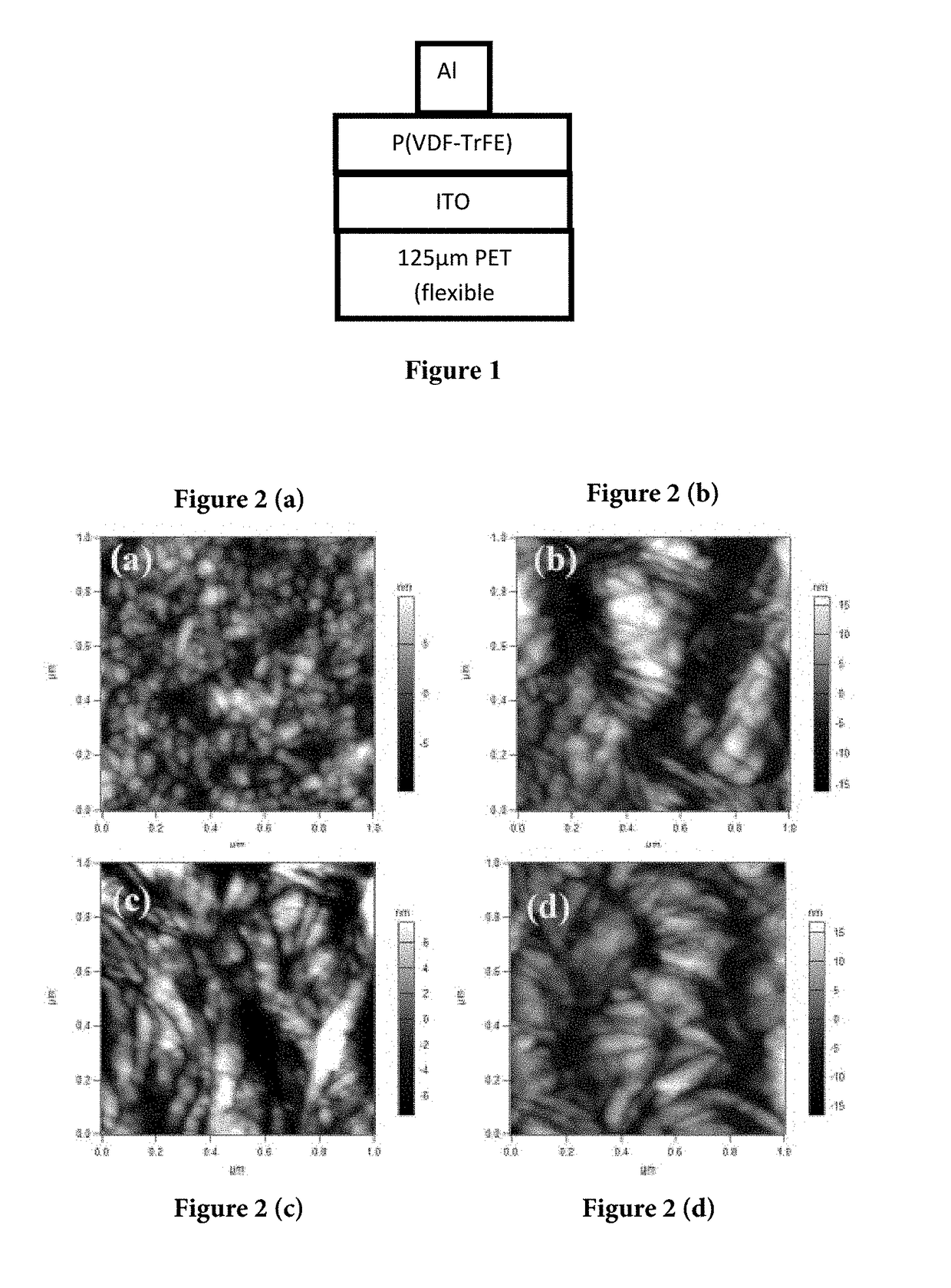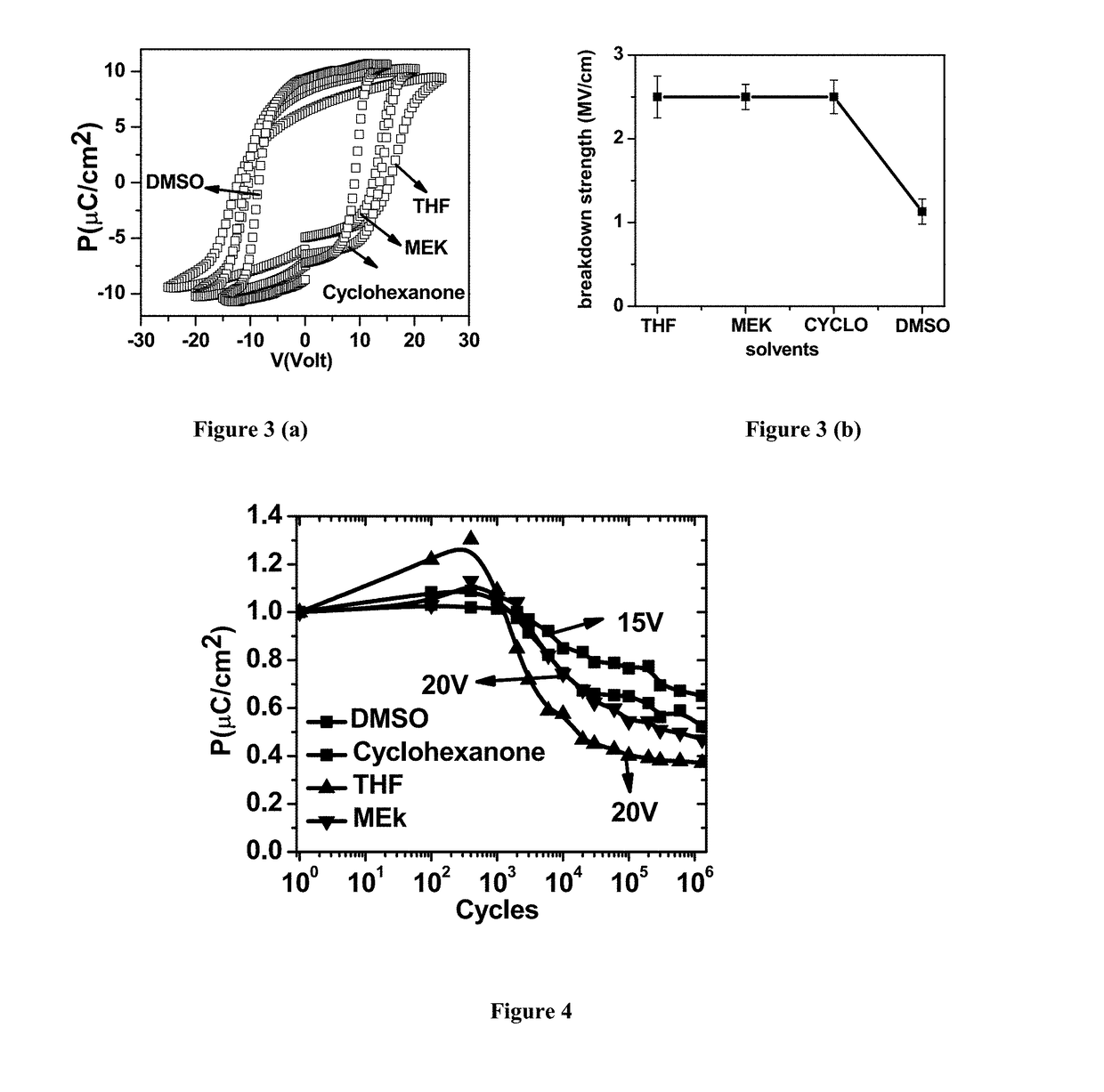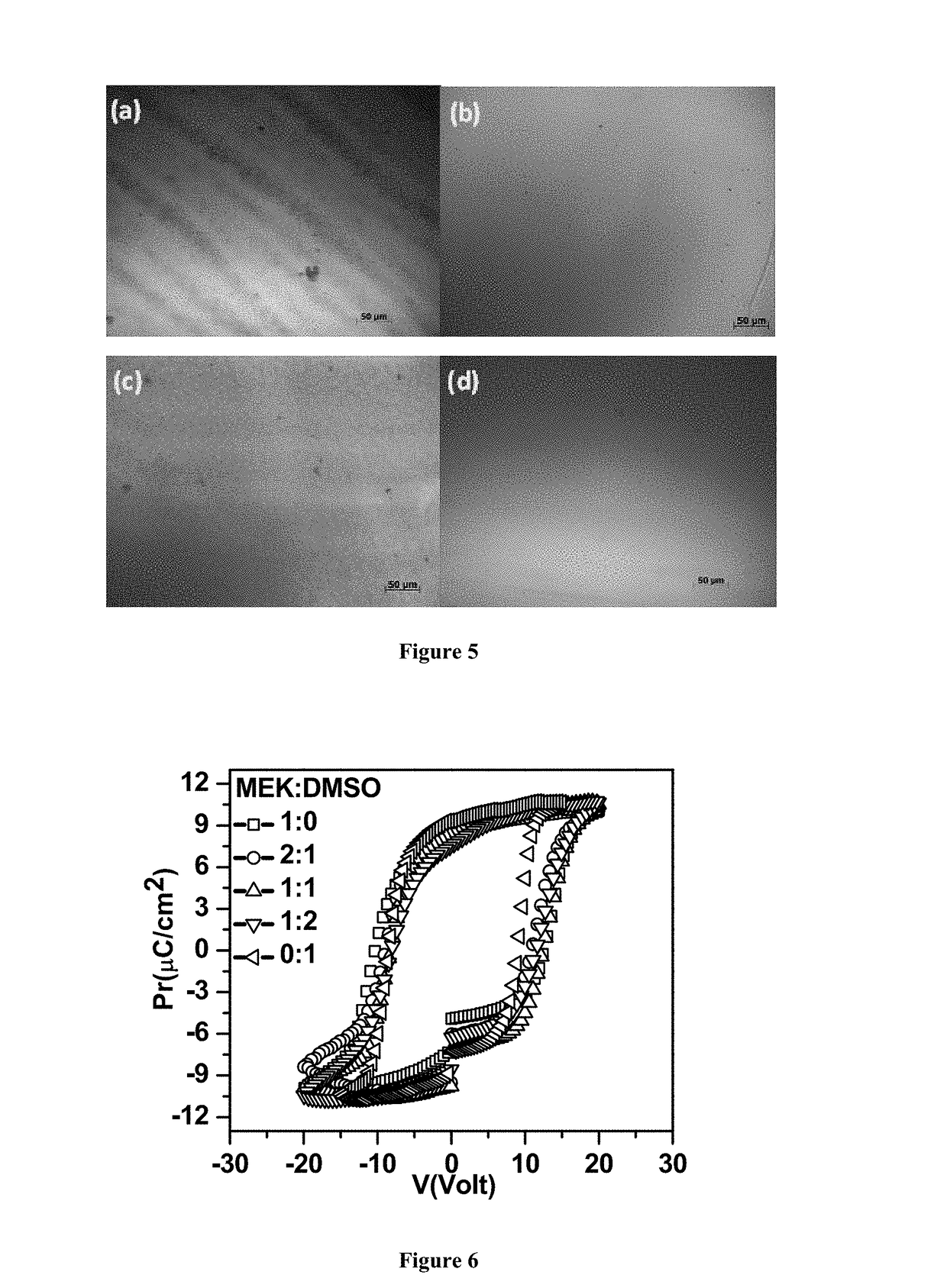Method of fabricating high-performance poly (vinylidenedifluoride-trifluoroethylene), p(vdf-trfe) films
a technology of trifluoroethylene and polyvinylidenedifluoride, which is applied in the field of organic thin film ferroelectric materials, can solve the problems of high power consumption (or high voltage operation), defects and short-circuiting of memory devices, and low fatigue endurance, so as to improve improve crystallinity, and improve the effect of fatigue endurance and thermal stability
- Summary
- Abstract
- Description
- Claims
- Application Information
AI Technical Summary
Benefits of technology
Problems solved by technology
Method used
Image
Examples
example 1
tal Set Up
[0089]ITO coated PET substrates were cleaned by ultrasonicating in acetone, isopropyl alcohol (IPA) and deionized water for 10 min in each solvent. P(VDF-TrFE) solutions were prepared in solvents with different dipole moments (μ):tetrahydrofuran (THF μ: 1.63D, B.P.:65° C.), Methyl ethyl ketone (MEK μ: 2.76D, B.P.: 80° C.), cyclohexanone (μ: 2.87D, B.P.:155° C.) and dimethyl sulfoxide (DMSO μ: 3.96D, B.P.: 189° C.). Concentration of P(VDF-TrFE) was maintained at 25 mg / ml in each solvent. Films of P(VDF-TrFE) were spin coated at 3000 rpm for one minute followed by annealing at a temperature ranging from 138-142° C. for 1 hour. The films were subsequently quenched in ice water. Top electrodes of 1 mm diameter were fabricated by thermally evaporating Al through a metal mask for making electrical measurements. The arrangement of such device has been portrayed in accompanying FIG. 1. For better adherence of the films on ITO substrates films were fabricated by using above solvent...
example 2
ve AFM Images
[0090]The P(VDF-TrFE) films produced by casting with different solvents in an experimental set up as mentioned in example 1 were studied under AFM. As illustrated in accompanying FIG. 5, all films showed good thickness uniformity, except the one which was casted from DMSO solvent alone. The DMSO casted P(VDF-TrFE) film had wide variation in thickness i.e. 195±30 nm. AFM images (as illustrated in FIG. 2) also showed an increase in the grain size with increasing boiling point and dipole moment of the solvent: THF derived films showed very tiny spherical grains, MEK and cyclohexanone derived films showed moderate size grains and DMSO derived films exhibited needle shaped featured. The grain size increased further on annealing the films.
example 3
tric Measurements Conducted on P(VDF-TrFE) Thin Film Capacitors Fabricated on Ozone Treated ITO from Different Solvents
[0091]FIG. 3 illustrates the results of ferroelectric measurements conducted on P(VDF-TrFE) thin film capacitors fabricated on ozone treated ITO from different solvents (as mentioned in the experimental set up of example 1 above). FIG. 3(a) illustrates well saturated ferroelectric hysteresis loops of the P(VDF-TrFE) thin films in all case but with differences in the polarization (Ps and Pr) and coercive field values. Devices of DMSO derived films switch even at 10 V suggesting their applicability for low voltage memory devices and highlight the importance of using highly polar solvents like DMSO and the surface treatment. Another important parameter, breakdown strength of the ferroelectric films derived from different solvents is depicted in FIG. 3(b). All films have similar breakdown strength except DMSO. Low breakdown strength of DMSO films could be due to wavy na...
PUM
| Property | Measurement | Unit |
|---|---|---|
| Temperature | aaaaa | aaaaa |
| Temperature | aaaaa | aaaaa |
| Fraction | aaaaa | aaaaa |
Abstract
Description
Claims
Application Information
 Login to View More
Login to View More - R&D
- Intellectual Property
- Life Sciences
- Materials
- Tech Scout
- Unparalleled Data Quality
- Higher Quality Content
- 60% Fewer Hallucinations
Browse by: Latest US Patents, China's latest patents, Technical Efficacy Thesaurus, Application Domain, Technology Topic, Popular Technical Reports.
© 2025 PatSnap. All rights reserved.Legal|Privacy policy|Modern Slavery Act Transparency Statement|Sitemap|About US| Contact US: help@patsnap.com



